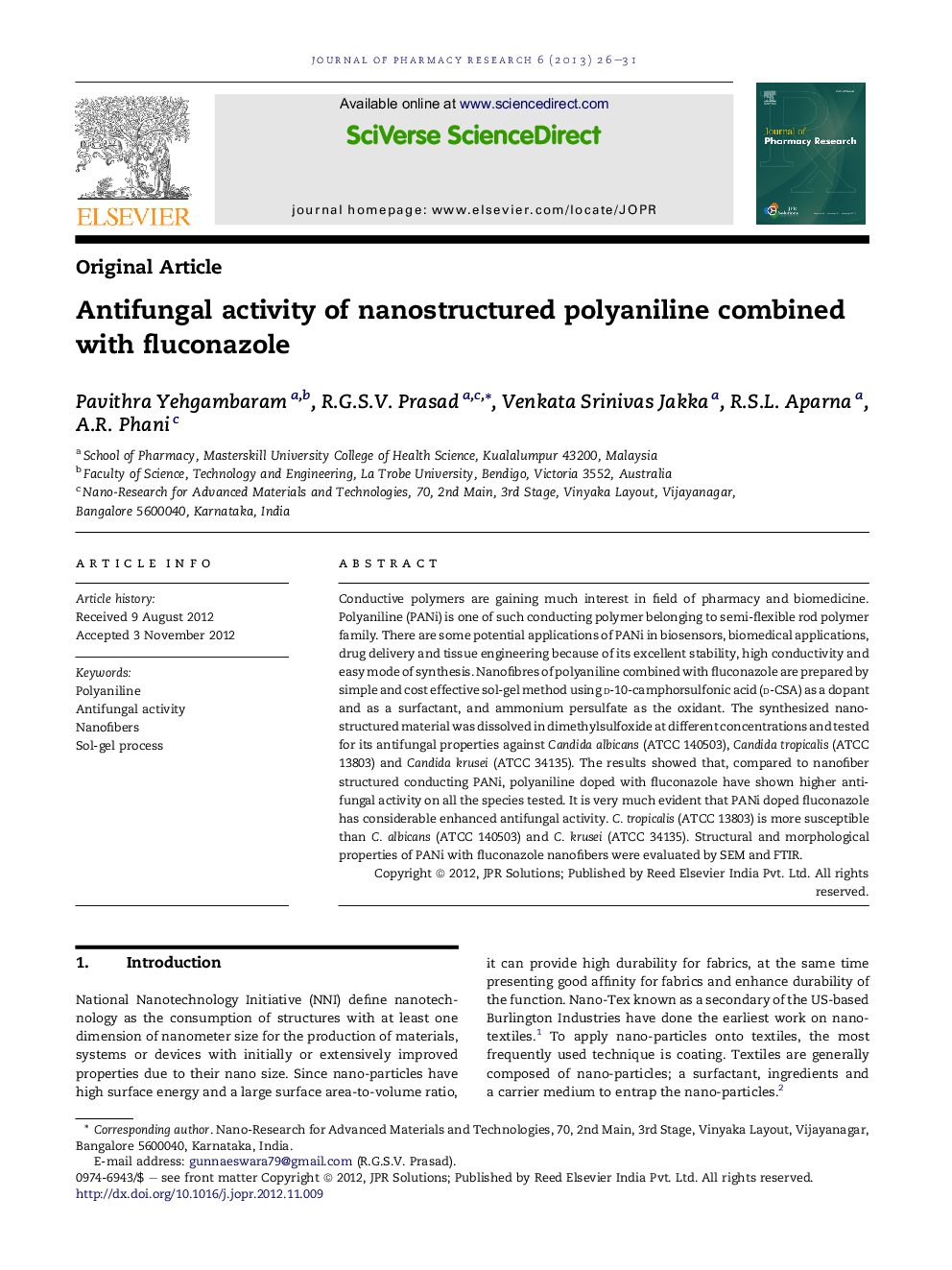| Article ID | Journal | Published Year | Pages | File Type |
|---|---|---|---|---|
| 8542463 | Journal of Pharmacy Research | 2013 | 6 Pages |
Abstract
Conductive polymers are gaining much interest in field of pharmacy and biomedicine. Polyaniline (PANi) is one of such conducting polymer belonging to semi-flexible rod polymer family. There are some potential applications of PANi in biosensors, biomedical applications, drug delivery and tissue engineering because of its excellent stability, high conductivity and easy mode of synthesis. Nanofibres of polyaniline combined with fluconazole are prepared by simple and cost effective sol-gel method using d-10-camphorsulfonic acid (d-CSA) as a dopant and as a surfactant, and ammonium persulfate as the oxidant. The synthesized nanostructured material was dissolved in dimethylsulfoxide at different concentrations and tested for its antifungal properties against Candida albicans (ATCC 140503), Candida tropicalis (ATCC 13803) and Candida krusei (ATCC 34135). The results showed that, compared to nanofiber structured conducting PANi, polyaniline doped with fluconazole have shown higher antifungal activity on all the species tested. It is very much evident that PANi doped fluconazole has considerable enhanced antifungal activity. C. tropicalis (ATCC 13803) is more susceptible than C. albicans (ATCC 140503) and C. krusei (ATCC 34135). Structural and morphological properties of PANi with fluconazole nanofibers were evaluated by SEM and FTIR.
Related Topics
Health Sciences
Pharmacology, Toxicology and Pharmaceutical Science
Pharmacology, Toxicology and Pharmaceutics (General)
Authors
Pavithra Yehgambaram, R.G.S.V. Prasad, Venkata Srinivas Jakka, R.S.L. Aparna, A.R. Phani,
